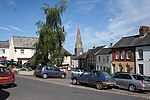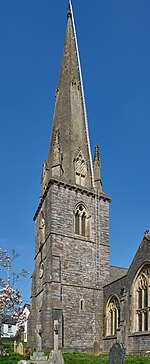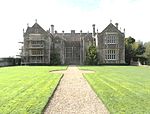Coldharbour Mill Working Wool Museum
Grade II* listed buildings in DevonGrade II* listed industrial buildingsGrade II* listed museum buildingsGrade II* listed watermillsIndustrial Revolution ... and 17 more
Industrial archaeological sites in DevonIndustrial buildings completed in 1799Industrial buildings in EnglandIndustry museums in EnglandLocal museums in DevonMuseums established in 1981Museums in DevonPreserved beam enginesPreserved stationary steam enginesSpinningSteam museums in EnglandTextile mills completed in the 18th centuryTextile museums in the United KingdomUse British English from February 2015Watermills in DevonWool organizationsWoollen mills

Coldharbour Mill, near the village of Uffculme in Devon, England, is one of the oldest woollen textile mills in the world, having been in continuous production since 1797. The mill was one of a number owned by Fox Brothers, and is designated by English Heritage as a Grade II* listed building.
Excerpt from the Wikipedia article Coldharbour Mill Working Wool Museum (License: CC BY-SA 3.0, Authors, Images).Coldharbour Mill Working Wool Museum
Coldharbour, Mid Devon
Geographical coordinates (GPS) Address External links Nearby Places Show on map
Geographical coordinates (GPS)
| Latitude | Longitude |
|---|---|
| N 50.9016 ° | E -3.3353 ° |
Address
Coldharbour Mill
Coldharbour
EX15 3EE Mid Devon
England, United Kingdom
Open on Google Maps








